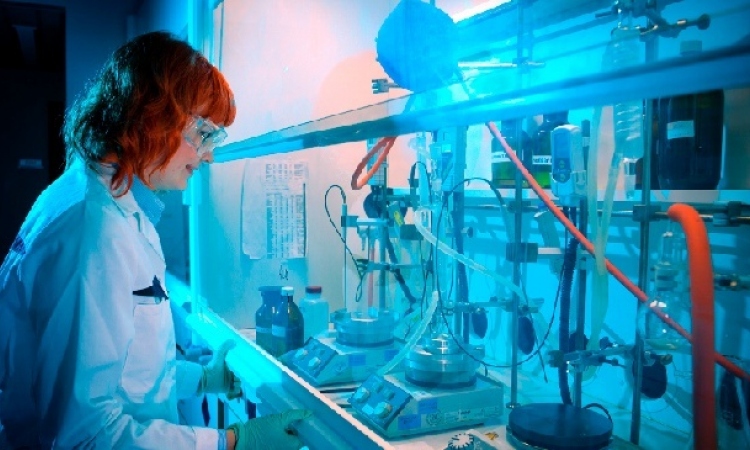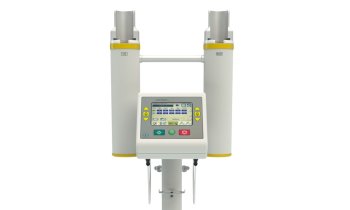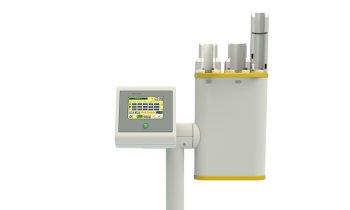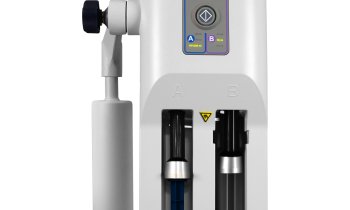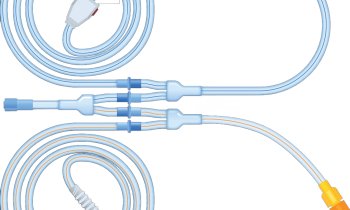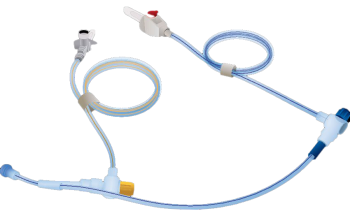Interview • Shift from biopsy to imaging
How MRI-first diagnostics are transforming prostate cancer care
Magnetic resonance imaging (MRI) holds great potential to spare men with suspected prostate cancer a painful biopsy. In our interview, Dr. Peter Seidensticker, Head of Medical Affairs Radiology at Bayer, outlines how MRI could be implemented as a first-line diagnostic.
Interview: Wolfgang Behrends
Image source: Bayer
HiE: The PROKOMB study suggests MRI can serve as the first diagnostic step for suspected prostate cancer – where do you see the advantages of this approach compared to the traditional biopsy-first strategy?

Image source: Bayer
Dr. Seidensticker: “According to some current analyses, the majority of biopsies conducted for prostate cancer diagnostics are unnecessary. Against this background, the PROKOMB study, which was conducted by the Charité and supported by Bayer, demonstrates that utilizing MRI as the first diagnostic step in suspected prostate cancer can offer several advantages over the traditional biopsy-first approach.
First and foremost, by identifying patients who do not show suspicious lesions on the scan, MRI can significantly reduce the need for unnecessary – and quite invasive – biopsies and avoid associated downsides, such as potential infections. Moreover, pre-biopsy MRI facilitates more precise, targeted biopsies in cases of clinically significant cancers that require treatment, while minimizing the risk of over-diagnosing indolent cancers.“
What were the most striking findings of the study that support changing clinical practice?
“The core finding of the PROKOMB study showed that men with non-suspicious MRI can avoid biopsies without being at increased risk of clinically significant prostate cancer. To be precise, the study shows that an MRI-informed strategy could prevent biopsies in 41% of all men, and 86% of MRI-negative men over three years.
These findings are crucial in advancing strategies and innovative approaches in prostate imaging and will benefit many patients. A significant impact of the PROKOMB study is the recent update to the respective German S3 guideline on prostate cancer, which now cites the PROKOMB study. So, the study made an active contribution to new recommendations, reinforcing the importance of evidence-based practices in patient care. Against this background, we are very pleased to have supported this important study.”
Recommended article

Article • Research, diagnostics, therapy
Focus on prostate cancer
Prostate cancer (PCa) is not only one of the most common, but also one of the deadliest types of cancer in men. Diagnostics are correspondingly sophisticated, from imaging via ultrasound or MRI to various biopsy techniques – often even in combination. Keep reading for current developments in early detection, staging, therapy and research.
Are there specific MRI protocols or sequences necessary for prostate cancer detection, and how standardized are these across different imaging centres?
“Prostate MRI or better multiparametric MRI of the Prostate (mpMRI) describes a series of standard MRI sequences that are also used in other areas of the body. However, there are specifics requiring training for the technologists in order to plan and set up the scan, and for the radiologist reading Prostate MRIs is also still quite specialized knowledge. Enhanced training, simplified scanners, and future AI integration will do their part in advancing Prostate MRI further.”
What role do MRI contrast agents play in PCa diagnostics? How significant is cumulative exposure for patients who may need multiple MRIs over their lifetime?
“Prostate MRI is poised to become a standard practice in evaluating prostate cancer, with around 600,000 procedures performed annually and a 5% growth rate. The gadolinium-based contrast agent used in these scans can help physicians distinguish cancerous tissue and facilitate diagnosis, staging, and monitoring. A next generation low dose, high relaxivity gadolinium-based contrast agent can be particularly beneficial for patients needing multiple contrast-enhanced scans, as the gadolinium lifetime exposure is reduced, such as in cancer patients undergoing disease monitoring. Using the lowest effective dose without compromising diagnostic results is also the recommendation of health authorities and scientific guidelines. This is why Bayer drives innovation in this field with a new investigational low dose MRI contrast agent.”

Image source: Bayer
What are the main barriers to implementing an MRI-first diagnostic pathway in routine practice (cost, availability, expertise, or something else)? How could they be overcome?
“Potential barriers such as costs, limited availability, e.g. in more rural areas, and a need for specialized expertise to interpret scans, could be overcome by training radiologists and technicians more effectively, by developing simplified and standardized scan protocols, and by implementing future AI solutions supporting for example the reading of the images. All of these would have the potential to make MRI-first pathways more efficient and scalable. Additionally, changes to established clinical pathways may cause hesitation among practitioners to adopt new practices. Important clinical insights, e.g. from the PROKOMB study, help contribute to a needed paradigm shift for the benefit of patients among practitioners.”
From a health economics perspective, does the MRI-first approach make sense when you factor in the costs of unnecessary biopsies and their complications?
“This is subject for further investigation, but the MRI-first approach may offer cost-effective benefits, as the higher initial costs of MRI could possibly be balanced by helping to avoid unnecessary biopsies, and thus, potential complications like infections, minimizing hospital stays, and lessening further care related to false positives. Over time, this strategy could contribute to improved patient outcomes while also helping to lower overall healthcare cost.”
Finally, what is your ‘take-home message’ about the impact of MRI on prostate cancer diagnostics?
“Prostate cancer ranks as the second most common cancer in men and the fifth leading cause of cancer-related death worldwide. Adopting MRI as the initial diagnostic tool can enhance the identification of clinically significant cancers and improve diagnostic accuracy, but also has the potential to spare patients from unnecessary biopsies. This approach contributes to reducing patient anxiety and fostering more personalized care – ultimately leading to better outcomes for men facing prostate cancer.”
22.10.2025
- contrast agents (144)
- diagnostics (562)
- imaging (1629)
- MRI (827)
- prostate (30)
- prostate cancer (219)





